Home » Cost Guides » New York Cost Guides » How Much Does it Cost to Build a House in New York City?
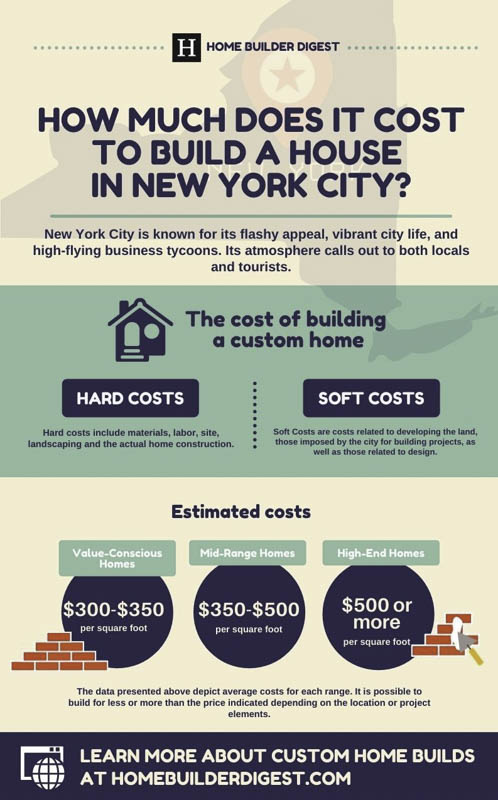
New York City (NYC) is known for its flashy appeal, vibrant city life, and high-flying business tycoons. Its atmosphere calls out to both locals and tourists. Unfortunately, according to a report from Norada Real Estate Investments, it is also one of the cities hit hardest by the COVID-19 pandemic; it has recorded the highest job loss among America’s major metropolitan cities. Initially, home prices fell compared to what they were before the pandemic’s onset, which went on to entice buyers. NYC boroughs like Manhattan and Queens are now experiencing a boom in the real estate market. Because of this, the available supply cannot meet market demands. Ideally, constructing a new house would be the more efficient option compared to scouring the market for expensive ready-to-move-in homes.
The Cost of Building a Custom Home in New York
New home construction in the United States is typically priced from $100 to $200 per square foot. Custom and luxury homes can reach $500 and up. The national average of new home construction is calculated to be $285,810, with most projects ranging between $120,790 and $451,315. Pricing differs based on factors like location, house size and footprint, and quality of the work. Areas with high cost of living like NYC and San Francisco sometimes go as high as $400 per square foot. The average square foot cost to build a house in NYC is $300, compared to $100 to $200 per square foot in other areas. NYC luxury homes are at least $500 per square foot and go as high as $1,000 per square foot or more. A regular 1,500 square foot house can cost at least $450,000, a figure that includes builder quality, materials, and fixtures. NYC’s construction costs are ranked in the top 10 around the world, according to the Arcadis 2021 International Construction Cost Index. The overall construction cost can still go up or down depending on different factors like location, size, and design.
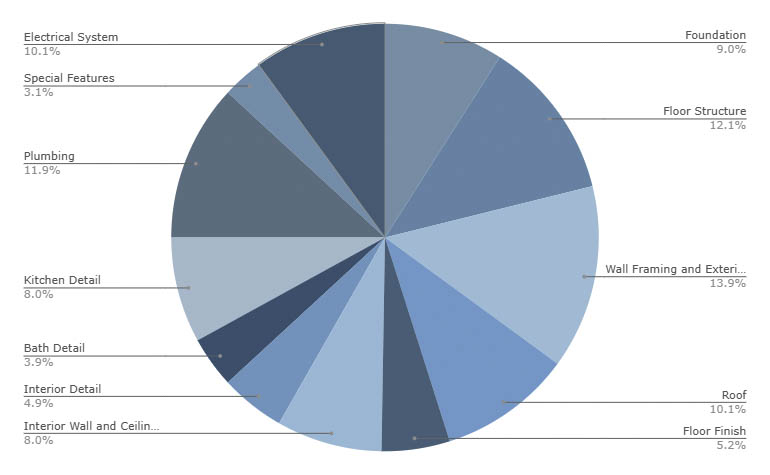
Figure 1. Typical cost breakdown of a single-family home constructed using the conventional method, according to Home Builder Digest. Image Source: National Cost Guide.
The reason costs can and will vary for each new home construction lies with the labor and resources that go into it. Most homeowners interested in building homes from the ground up tend to focus on just the framing, foundation, plumbing, roofing, and flooring during the planning phase. There are other costs associated with new home construction like architecture and design fees, builder fees, permits, and additional custom features. These factors are categorized under soft and hard costs, which can fluctuate independently.
Hard Costs
Hard costs include materials, labor, site, landscaping, and the actual home construction. According to NYC-based architect Jorge Fontan, American Institute of Architects (AIA), a basic house will often be priced between $300 and $350 per square foot. A house with higher quality will call for $350 to $500 per square foot instead; this is the range where it will be easier to find high-quality contractors and architects. NYC luxury homes will cost at least $500 per square foot; some home construction projects have reached $1,000 per square foot or more. These homes feature higher-end quality materials, distinctive architecture, and mostly customized pieces.
On the side of accounting for construction materials, it should be noted that costs have gone up since the start of the pandemic. The new pricing for lumber, steel, and other materials has resulted in an increased residential building cost. Lumber prices have gone up 171% while raw, bare steel prices have increased by 75%. Based on Construction Dive’s report, about 71% of surveyed contractors face a shortage of at least one material.
Soft Costs
The other expenses that go beyond the actual building of the structure are considered soft costs. These are costs related to developing the land, those imposed by the city for building projects, as well as those related to design.
Cost of the Land
As one of the world’s most dense metropolitan areas, the price of land in New York City varies greatly from one area to another. Since the city is divided into five boroughs, each one’s geographical size plays into the cost of land within the vicinity. This is discussed further in the next section.
The rapid movement of its residents in and out of the city also adds to the volatility of New York City’s housing market, especially over the recent pandemic. Bearing the brunt of job losses as a result of COVID-19, many fled the city in 2020, bringing market prices down come January of this year. By the second quarter, however, this plunge drew back former residents, and even brought in new ones, taking advantage of the sporadic prospect of cheap New York City real estate. This promptly drove prices back up, especially as the economy slowly began reopening in May.
For those looking to build a new home within the city, undeveloped land can be a little tough to come by, and trends show that the nearby suburbs might be a better place to build. However, Zillow does list some lots throughout the five boroughs going for anywhere between $30 to $100 per square foot. Building on raw land can incur an additional cost ranging from $20,000 to $50,000 for site development.
Permits and Other Fees
All building permits within the city of New York are filed through the Department of Buildings (DOB) NOW Public Portal, which calculates filing fees based on the total job cost. Local Law 56 of 2016 reflects the rates for new buildings as follows:
- 1, 2, 3-family dwellings: $0.06 per square foot, but not less than $100.00
- Fewer than seven stories: $0.26 per square foot, but not less than $280.00
- Seven stories or more: $0.45 per square foot, but not less than $290.00
This comes with a record management fee of $165 charged on the initial filing. Concrete work will also incur a flat fee of $390. For solar power installation, the minimum filing fee is $130 for the first $5,000 of the cost of alteration, plus $2.60 for each additional $1,000 in excess. Roofing Brooklyn NYC estimates the total cost of permit fees to be between $400 and $1,687.
Architecture and Design Fees
Architects have different ways to charge for their services. Some charge by the hour based on the respective rates of the individuals working on the project. While it can be ideal for architects, this mode of charging is not as popular because it can blindside clients with unexpected costs. In some cases, architects set a maximum limit for the fees.
Other firms charge flat rate fees based on the total estimated job cost. This can be billed monthly based on the percentage of work completed or work milestones, especially if it’s a larger job. This fixed mode of charging is very transparent, with no surprises to the client.
More architects charge a percentage of the total construction cost. This can be anywhere between 5% to 20% of the total project cost and can also be billed monthly or per milestone at a predetermined rate. While more structured, clients still run the risk of incurring surprise costs with this mode of charging.
Still, others charge a set cost per square foot of construction work. Some also incorporate a mix of these modes, charging a flat rate for design and permit filing but an hourly rate for the actual site visits.
How Do Custom Home Pricing Trends Vary Throughout the Five Boroughs
Online development publication New York YIMBY’s 2021 Construction Report, covering residential permit filing data from 2020, shows a drop from 2019’s application numbers. Trends for the Manhattan borough are consistent with its having reached its initial build-out nearly a century ago, now considered one of the most densely populated major urban areas in the nation. Filings for the borough were at a measly 86. Meanwhile, Queens records the highest number of filings of the five boroughs, at 552. Brooklyn comes in second at 498. For Staten Island, there were 429 filings, which included a large volume of single- and two-family homes and garages. The Bronx comes in fourth with 212 filings.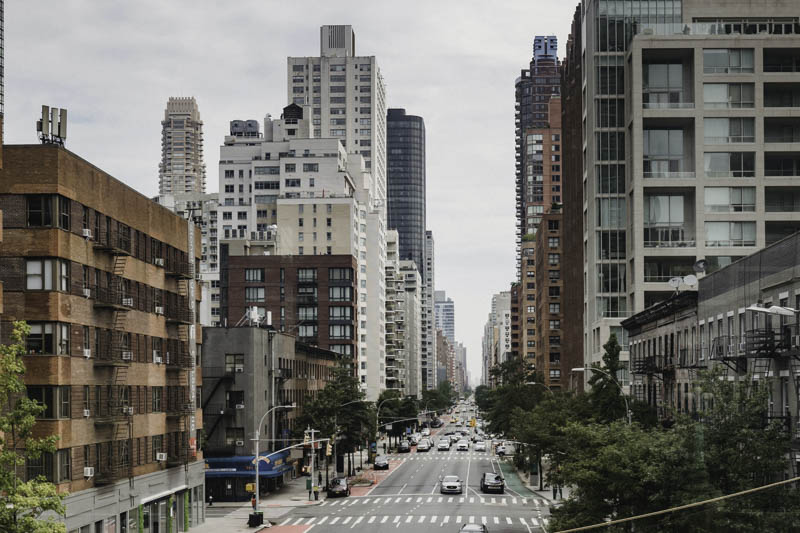 On the whole, New York City has grown to be more of a buying and renting market than a building one in terms of housing. NYC real estate resource StreetEasy and market and consumer data aggregator Statista report the following purchasing per square foot trends for each borough:
On the whole, New York City has grown to be more of a buying and renting market than a building one in terms of housing. NYC real estate resource StreetEasy and market and consumer data aggregator Statista report the following purchasing per square foot trends for each borough:
The Bronx
The Bronx is known for giving prospective buyers bang for their buck when it comes to space. It is the least expensive borough based on the median price per square foot. Morris Park, which is east of the Bronx River Parkway, is the least expensive neighborhood in the city. A 2,745 square foot Morris Park home is priced at $243 per square foot. A 2,692 square foot Parkchester home costs $255 per square foot, while a 2,303 square foot Bronxwood one can be bought at $275 square foot. The cost of eight homes in these areas is equal to the price of one home in the SoHo neighborhood in Manhattan.
Brooklyn
Following the onset of the pandemic, both rent and sale in NYC fell. Most of the city’s boroughs marked overwhelming year-over-year declines on record while median home prices fell at the fastest annual rate on record. Out of the five boroughs, Brooklyn was the first to recover from the effects of the pandemic. One-to-three family homes experienced a price increase between the first quarters of 2020 and 2021, going from $616 per square foot to $647 per square foot. About 1,100 Brooklyn homes of varying sizes are currently on the market for $700,000 or less. 2,071 square foot homes in the East New York neighborhood are usually priced at $338 per square foot, while a 2,011 square foot East Flatbush home goes for $348 per square foot. A Canarsie 1,983 square foot home costs $353 per square foot.
Manhattan
Compared to the Bronx, Manhattan is the most expensive borough for living spaces even with pandemic prices. New development housing fell from being $2,541 per square foot to $2,152 per square foot. The most affordable area in Manhattan is Washington Heights, which offers a 1,074 square foot home for $700,000. Neighborhoods like Hamilton Heights and Morningside Heights are priced higher due to them being uptown areas. Hamilton Heights has 906 square foot homes costing $773 per square foot while Morningside Heights has 875 square foot homes priced at $800 per square foot. Due to the size of Manhattan, the smaller square footage’s pricing makes sense.
Queens
Queens is currently experiencing a real estate boom. The price point for the rental market has returned to pre-pandemic levels, which means it outperformed the other boroughs. Renters from Brooklyn and Manhattan are making the decision to move to Queens, resulting in increased demand for the area. Queens prices are capable of contending with the affordability of Bronx Spaces. An example of this is a 2,745 square foot home in Jamaica Estates priced at $255 per square foot. A Cambria Heights home measured at 2,692 square feet is on the market for $260 per square foot, while a 2,303 square foot Laurelton home is $304 per square foot.
Staten Island
During mid-year of 2021, houses in Staten Island were priced at $400 per square foot. The price has since increased to $484 per square foot.
Brownstones
One of the staples of the NYC landscape, most common in the boroughs of Brooklyn and Manhattan, is the brownstone — a centuries-old architectural style of townhouse characterized by slender façades built from brown sandstone ubiquitous in the city after the Civil War. Many who move to the Big Apple choose to just jazz up the interior of these iconic structures, keeping the classic exterior as is.
According to the Brownstone Boys, perhaps the most expensive space to update would be the kitchen. Labor costs could run from $10,000 to $15,000 to install and customize new fixtures, with individual material costs as follows:
- Cabinets: $7,000-$30,000
- Counters: $3,000-$8,000
- Appliances: $8,000-$12,000
- Faucet and sink: $1,500
- Backsplash tile: $1,000
- Lighting: $1,000
- Hardware: $500
The bathroom is just as crucial a space as the kitchen, with plumbing systems adding to the complexity of upgrading it. It would cost $9,000 to $12,000 to reconfigure and update the following components:
- Plumbing fixtures: $2,000-$5,000
- Double vanity: $1,500-$5,000
- Tub: $1,000-$3,000
- Tile: $600-$2,000
- Lighting: $750-$1,200
- Hardware: $300
Over the pandemic, with more people working from home, office space has also fast become a top consideration when renovating. A work desk can cost anywhere from $250 to $2,500. Built-in cabinets and storage range from $5,000 to $15,000.
For those who are getting a little stir-crazy from the work-from-home situation, it may be good to invest in some form of outdoor space as well. Adding a deck that’s up-to-code — made from non-combustible material like steel, concrete, or tile — could cost $20,000 to $25,000, while doing a backyard makeover could cost anywhere from $8,000 to $25,000, sometimes more.
How do the custom home building costs in New York compare to other nearby cities?
Permits found on online contractor marketplace BuildZoom (BZ) over the last five years also show more single-family detached homes being built in the surrounding cities in the New York metro area than in the boroughs themselves. Within the city, residential permits usually involve multifamily buildings or alterations to existing structures.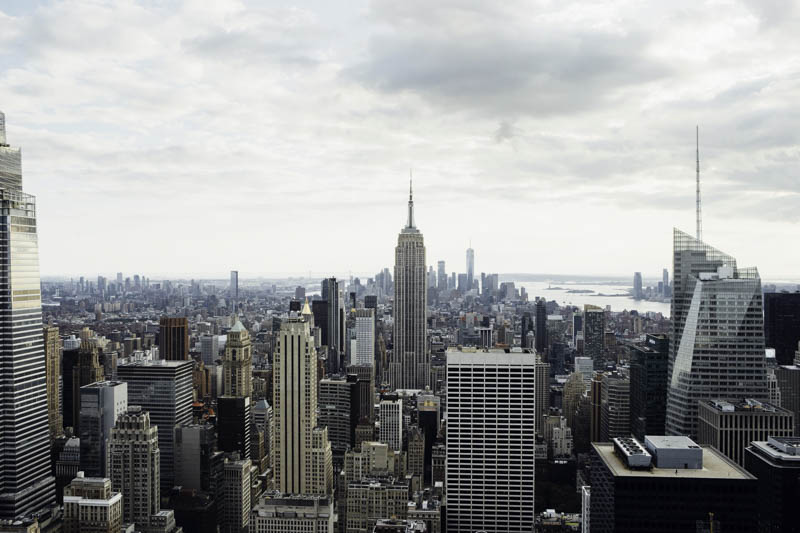 A single-family home built in Ossining in 2019 was valued at $155,000. More single-family homes were being built across the hamlets of Baldwin, Bellmore, Merrick, and Oceanside, as well as the villages of Atlantic Beach, Rockville Centre, and Valley Stream on Long Island from 2016 to 2018. Most of these homes had two stories and attached garages. Permits show a gradual rise in the values of these homes, starting at around $200,000 in late 2016, averaging in the $300,000 range in 2017, with the most expensive valuation at $478,000 in Valley Stream in early 2018.
A single-family home built in Ossining in 2019 was valued at $155,000. More single-family homes were being built across the hamlets of Baldwin, Bellmore, Merrick, and Oceanside, as well as the villages of Atlantic Beach, Rockville Centre, and Valley Stream on Long Island from 2016 to 2018. Most of these homes had two stories and attached garages. Permits show a gradual rise in the values of these homes, starting at around $200,000 in late 2016, averaging in the $300,000 range in 2017, with the most expensive valuation at $478,000 in Valley Stream in early 2018.
Major Custom Home Building Cost Trends Across the Web for New York
Responses on online forums like Quora reflect the same trend — building a new home in the city from the ground up can be a challenge, not to mention costly. Personal finance management resource PocketSense reports that the price of land in the state goes down the farther you go from NYC. Within the boroughs, the closest alternative to building a custom home would be to gut renovate a brownstone within its 19th-century façade. Luxury renovations could cost anywhere from $5 million to $50 million and beyond, depending on whether the property has been renovated before. Celebrities like Madonna have taken this route, getting creative by combining three townhouses in a row to get more space.
What Leading Custom Home Builders and Architects that Serve the New York Area Say
According to James Mansfield, CEO of luxury contractor firm West Village GC, there are several factors that result in NYC’s high construction costs. A full remodel of an apartment in Manhattan could cost $400 per square foot for a frugal client. This particular remodel could include floor plan reconfiguration, new bathrooms, full kitchen, flooring, HVAC, and custom millwork. Finishes could bring the cost to $600 per square foot and high-end work could bring it further up to $900 per square foot.
NYC’s position as one of the most expensive cities to build can be traced to it being an island with no storage space. Mansfield stated, “Everything is brought in on a just in time basis, impacting shipping and handling costs.”
The strict work hours that usually run from 9 AM to 4 PM, along with having multiple projects at once, adds to the expenses a client will incur. Workers tend to experience delegating time to different aspects of projects that are not necessarily construction work itself. This leads to actual labor being five hours out of the eight that still gets charged.
In addition, the Action Over coverage that covers worksite injuries has increased General Liability insurance costs. Mansfield shared that West Village GC’s policy has doubled over the years. The same can be applied to other firms as well. Small firms can no longer afford the necessary insurance to work in Manhattan buildings, which leaves budget-conscious clients with a limited pool of contractors to work with.
The pandemic has also affected the way the construction industry operates and prices its services. Due to the employment rate in the NYC construction industry having declined by 14.4% in 2020, the skilled labor pool has become limited. This has resulted in increased hourly rates, which burdens firms in conjunction with lumber and steel and fixture and fitting shortages. The production backlogs have extended project timelines and increase the risk to project completion over time. 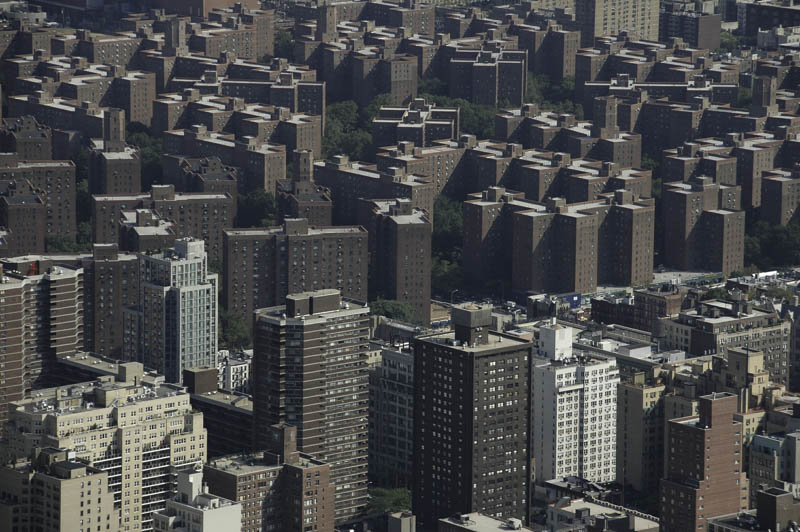 For ground up construction, Tambi Kat, owner of Design Build Enterprises, said that the low end of a basic bare bones home would typically cost $250 to $300 per square foot. A high-end luxury ground up project could be priced from $700 to $1,000+ per square foot. The overall cost of new home construction is dependent on factors like the number of units, code requirements, fire systems, and level of finish. Pricing is expected to fluctuate as the COVID-19 pandemic has a distinct impact on labor and material prices.
For ground up construction, Tambi Kat, owner of Design Build Enterprises, said that the low end of a basic bare bones home would typically cost $250 to $300 per square foot. A high-end luxury ground up project could be priced from $700 to $1,000+ per square foot. The overall cost of new home construction is dependent on factors like the number of units, code requirements, fire systems, and level of finish. Pricing is expected to fluctuate as the COVID-19 pandemic has a distinct impact on labor and material prices.
Tambi Kat has also noted that the sky-high demand for smaller/handyman projects has led many former subcontractors/laborers to open up their own businesses to supply services. Bigger firms have the tendency to focus on larger projects, which creates an opening in the market.
The past few months, however, have been busier, with firms fielding more proposals. Wider scale projects are beginning to make a comeback to the market as well.
Design Build Enterprises’ advice for homeowners is to hire professionals that are licensed and insured. Kati said that qualifications are also important to consider.
Despite the effects of the pandemic, the NYC construction industry is experiencing a boom in demand. Mansfield stated that experienced and organized firms will be able to find or create innovative solutions to overcome roadblocks. The West Village GC CEO also advises fellow firms to give clients options that are best fitted to certain projects, lifestyles, and budgets.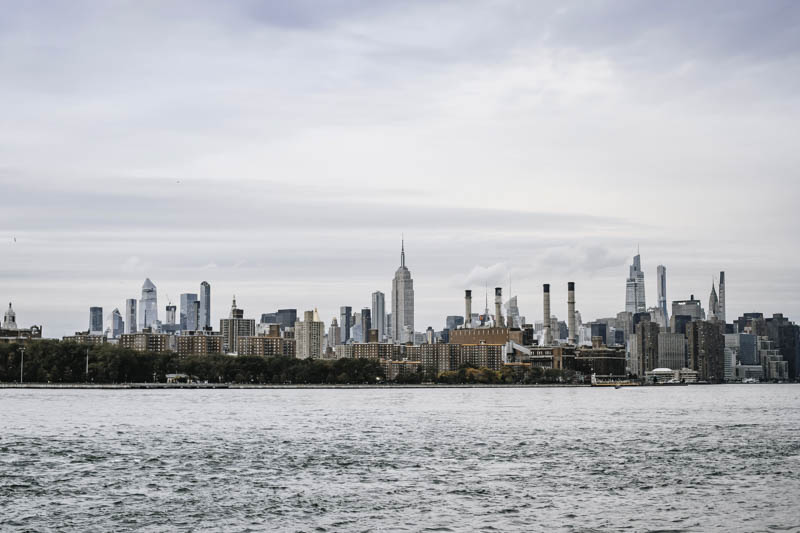 John Mahler runs JM2 Architecture, a full-service architecture which has a Residential division, as well as Commercial and Industrial divisions. Over the past year or two, John has seen a dramatic increase in pricing in the NYC market because of both labor and material shortages. For example, a recent fire recovery project in the city, which John said would normally cost around $300,000, was quoted at $1.2 million. Even at the lower end of the market, a basic home build might now run around $300/sq ft, almost double pre-Pandemic levels.
John Mahler runs JM2 Architecture, a full-service architecture which has a Residential division, as well as Commercial and Industrial divisions. Over the past year or two, John has seen a dramatic increase in pricing in the NYC market because of both labor and material shortages. For example, a recent fire recovery project in the city, which John said would normally cost around $300,000, was quoted at $1.2 million. Even at the lower end of the market, a basic home build might now run around $300/sq ft, almost double pre-Pandemic levels.
JM2 operates at all ends of the residential spectrum, from lower-end and more basic buildings to high-end custom homes with unique features. Generally, architectural fees will come out to 7-8% of a total project. For a high-end project that requires much more on-site management, customization, and input, added costs or a construction admin fee could be included as well. Ultimately, JM2 ties their fees to their scope of involvement and time spent on the project to bring high-quality work but fair pricing to their clients.
The Future of New York’s Residential Construction Industry
About two-thirds of the NYC population rent their homes. The city continues to be the most expensive area in America for renting apartments despite the pandemic’s effects on the economy. While the rental market is more affected by the pandemic, it is experiencing an increase in commercial activity due to interested parties flocking to the city. Apartment listing site Zumper registered $2,810 as the median price for an NYC one-bedroom apartment last August 2021, which is close to pre-pandemic levels.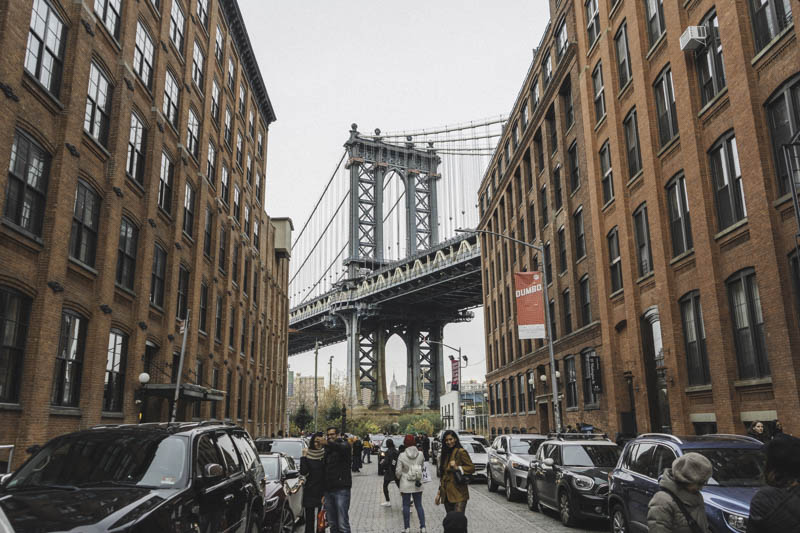 Meanwhile, for the housing market, property values are expected to experience strong appreciation. The relaxation of COVID-19 policies has led several economic sectors to open up. Based on existing trends, the NYC housing market will increase in activity during peak home-buying season. The industry can expect prices to rise due to the changes in supply and demand for 2022 and the rest of 2021. The current median price of a typical home in NYC is calculated to be $722,787, which means 50% of housing in the area are worth more and 50% are worth less. The median pricing is also expected to fluctuate between seasons.
Meanwhile, for the housing market, property values are expected to experience strong appreciation. The relaxation of COVID-19 policies has led several economic sectors to open up. Based on existing trends, the NYC housing market will increase in activity during peak home-buying season. The industry can expect prices to rise due to the changes in supply and demand for 2022 and the rest of 2021. The current median price of a typical home in NYC is calculated to be $722,787, which means 50% of housing in the area are worth more and 50% are worth less. The median pricing is also expected to fluctuate between seasons.
The residential side of the construction industry, compared to its commercial counterpart, will be benefiting from the boom in the real estate market. Demand for housing in NYC is continuously overwhelming the market supply, which has the potential to bring up demand for new home construction. However, industry experts have taken note of possible project slowdowns due to material shortages caused by the pandemic. According to Construction Dive’s report, about 71% of survey contractors have reported at least one material shortage. Out of the 71% of survey contractors facing shortages, 31% face lumber shortage, 11% face copper wire shortage, and 10% face lighting supply shortage. The shortage is also expected to increase construction costs. Additionally, the New York Build Congress has noted that the increase of construction work in the office, luxury multifamily, and infrastructure sectors also plays a part in increased costs.
YIMBY also reports that multifamily filings slightly outpace the single- and two-family housing construction category. The total square footage of multifamily filings is measured at almost 37 million square feet, which is almost two-thirds more than the proposed floor area. Single- and two-family filings, meanwhile, are measured at a total of 2.9 million square feet. The construction spending in NYC continues to feel the impact of the pandemic, especially from the pause in nonessential construction from March to June 2020. NYC construction spending in 2020 totaled $55.5 billion, which is $5.1 billion less than 2019’s construction spending. Moving forward, spending for the construction industry is expected to remain relatively stable, with a steady upward trend of 2.6% for 2021 before declining by 1.5% for 2022. In terms of residential construction spending, expenditure has gone down by 9.8% to $17.8 billion in 2020. IHS Markit, an economic data and forecasting company, foresees a decline in NYC’s population in the coming years. This will lead to a decrease in housing demand. The residential construction industry can expect to see spending decline by 19.6% in 2021 and 12.8% in 2022. The forecasted spending is currently at $12.5 billion for residential construction.
NYC’s government expressed uncertainties around the area’s economic growth, particularly after a disruption to eight years of consecutive growth. However, after Q2 of 2020 passed, the residential construction industry was able to reopen and return to work alongside commercial construction. Rather than experiencing sluggish recovery, the industry faces shifting and built-up demand for residential projects and commercial work as a whole. The local government is currently actively maintaining construction spending.
Considering building a home in New York?
Contact us for a free consultation
